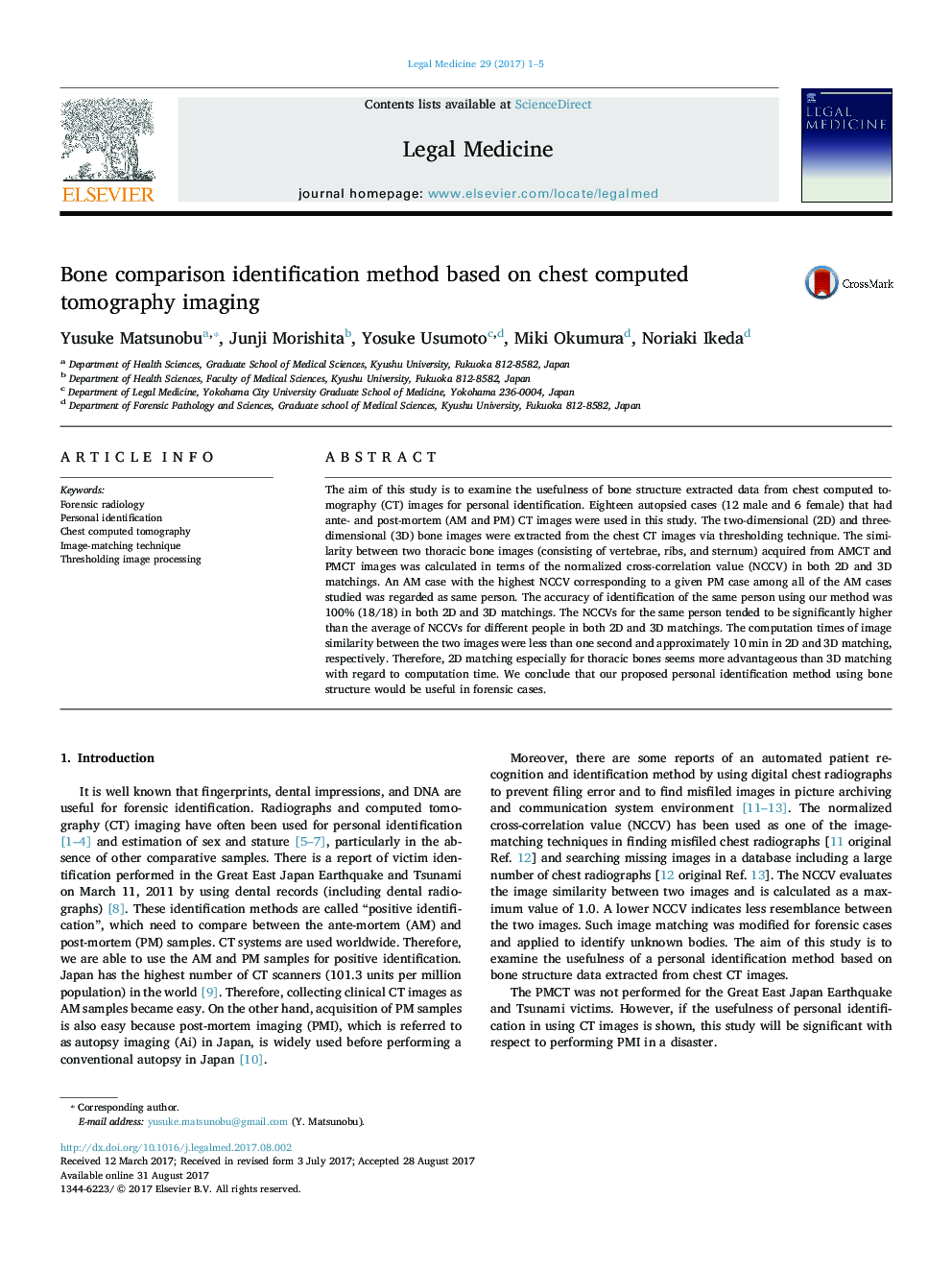| کد مقاله | کد نشریه | سال انتشار | مقاله انگلیسی | نسخه تمام متن |
|---|---|---|---|---|
| 6463090 | 1422467 | 2017 | 5 صفحه PDF | دانلود رایگان |
- A personal identification method was proposed in chest CT imaging.
- Two-and three-dimensional bone images were extracted from chest CT images.
- The similarity between ante-mortem and post-mortem bone images was calculated.
- The thoracic bone structure showed potential usefulness for personal identification.
The aim of this study is to examine the usefulness of bone structure extracted data from chest computed tomography (CT) images for personal identification. Eighteen autopsied cases (12 male and 6 female) that had ante- and post-mortem (AM and PM) CT images were used in this study. The two-dimensional (2D) and three-dimensional (3D) bone images were extracted from the chest CT images via thresholding technique. The similarity between two thoracic bone images (consisting of vertebrae, ribs, and sternum) acquired from AMCT and PMCT images was calculated in terms of the normalized cross-correlation value (NCCV) in both 2D and 3D matchings. An AM case with the highest NCCV corresponding to a given PM case among all of the AM cases studied was regarded as same person. The accuracy of identification of the same person using our method was 100% (18/18) in both 2D and 3D matchings. The NCCVs for the same person tended to be significantly higher than the average of NCCVs for different people in both 2D and 3D matchings. The computation times of image similarity between the two images were less than one second and approximately 10Â min in 2D and 3D matching, respectively. Therefore, 2D matching especially for thoracic bones seems more advantageous than 3D matching with regard to computation time. We conclude that our proposed personal identification method using bone structure would be useful in forensic cases.
Journal: Legal Medicine - Volume 29, November 2017, Pages 1-5
